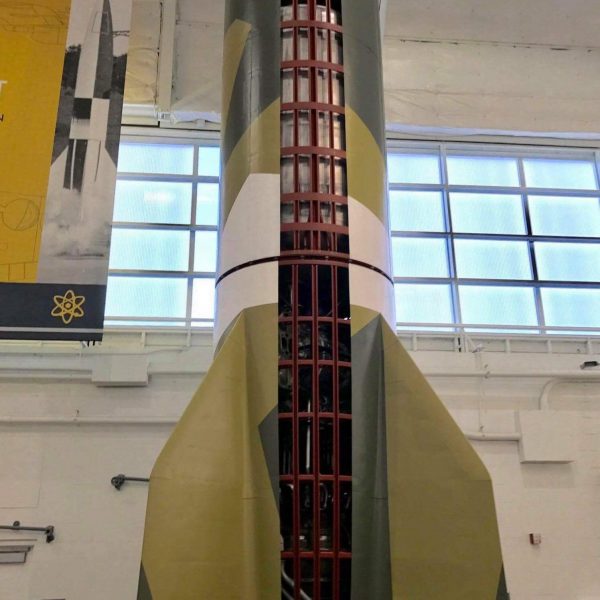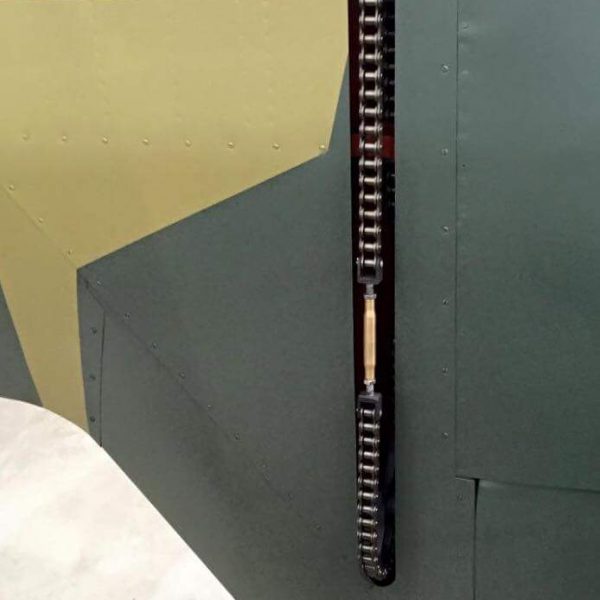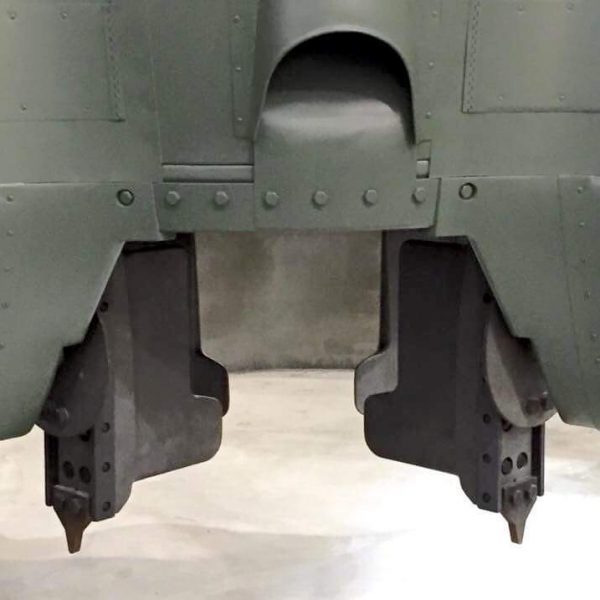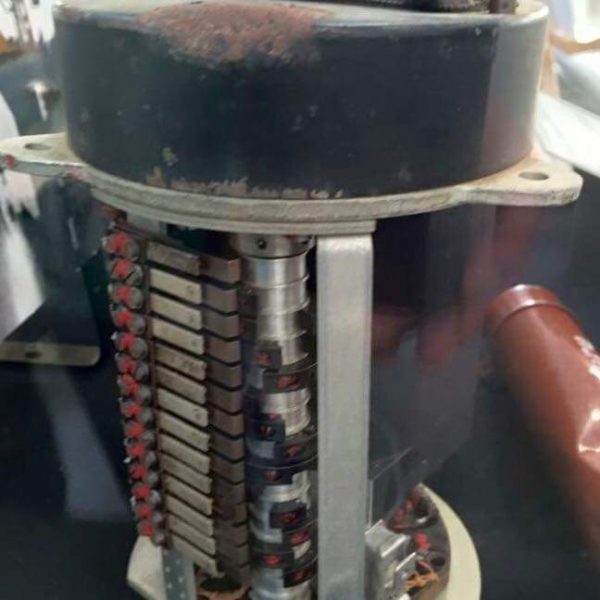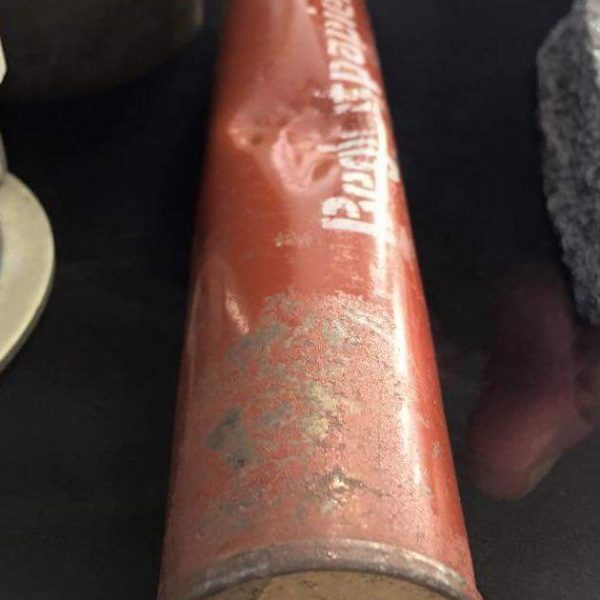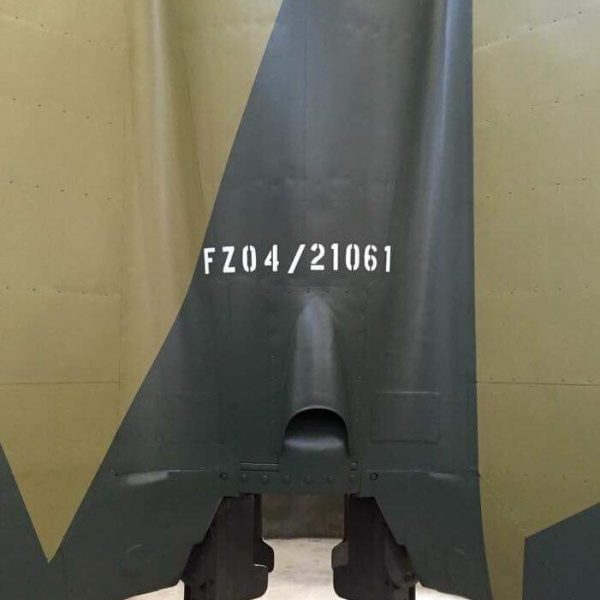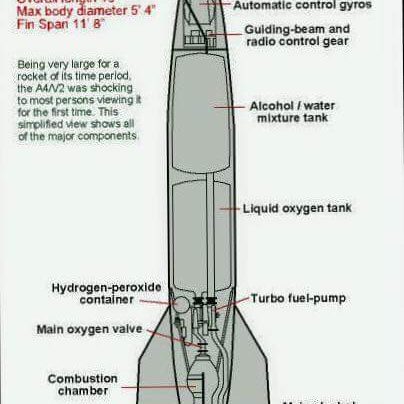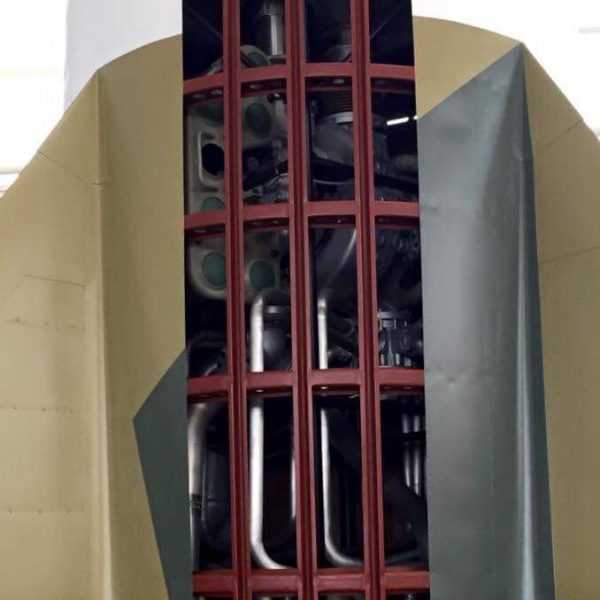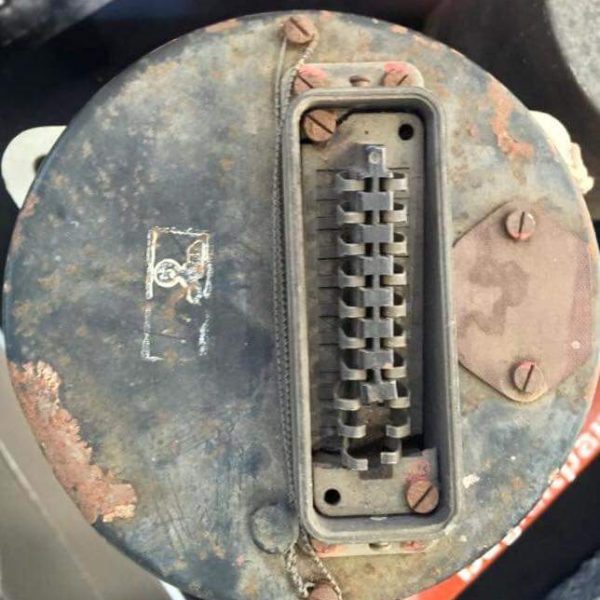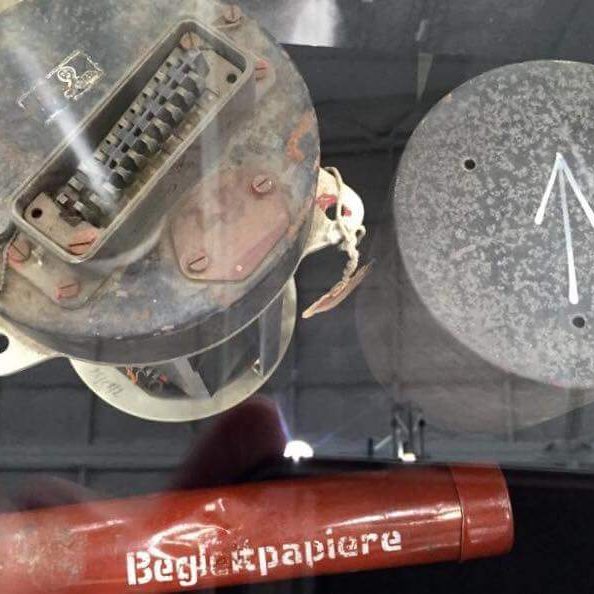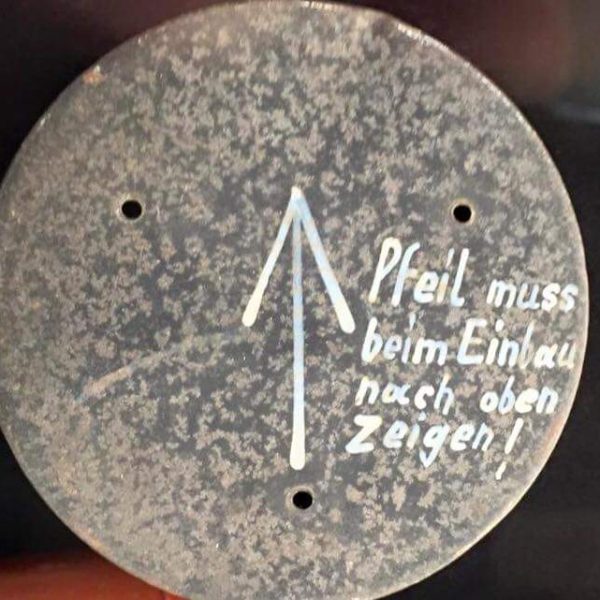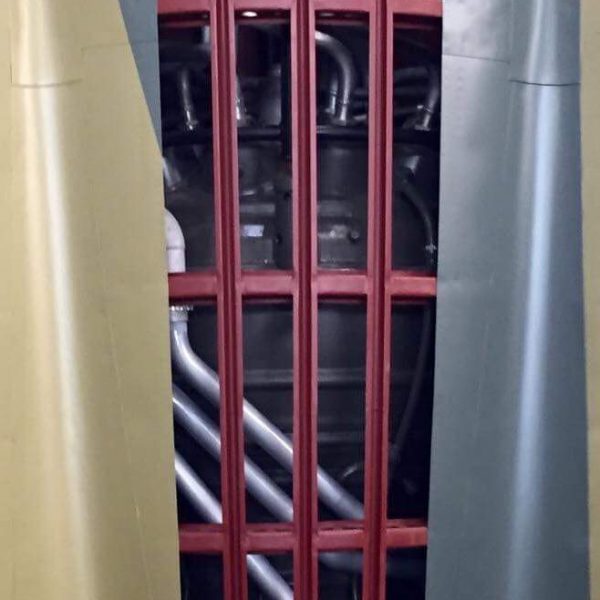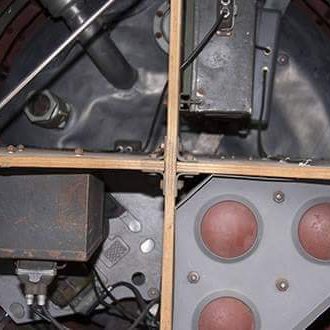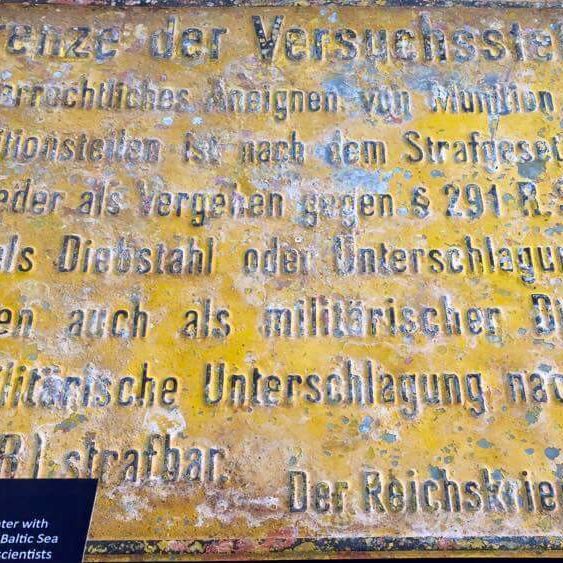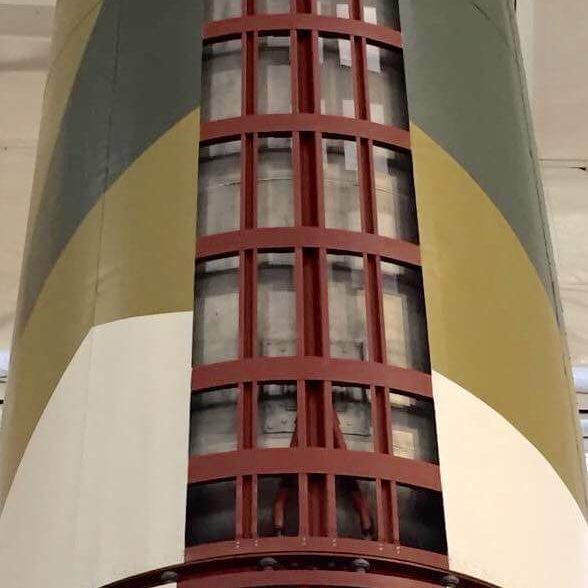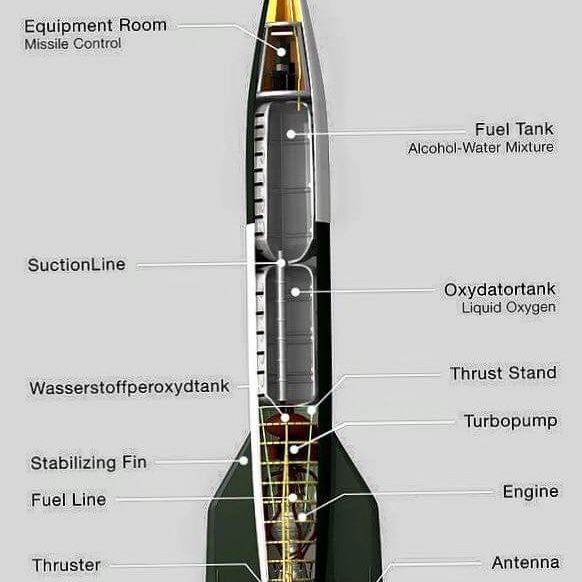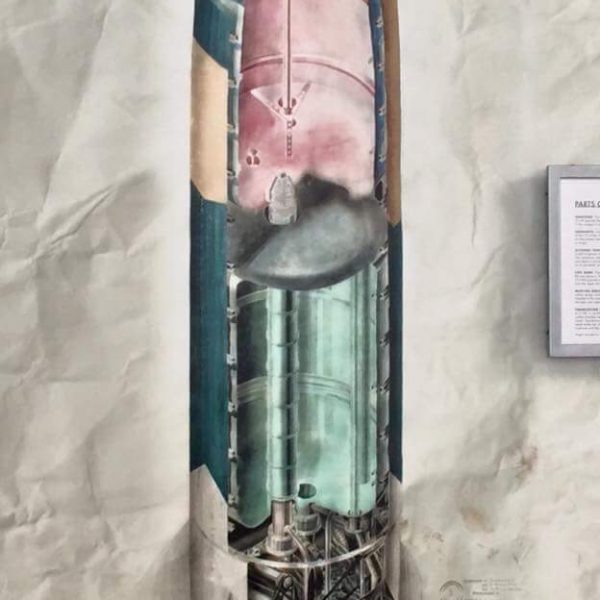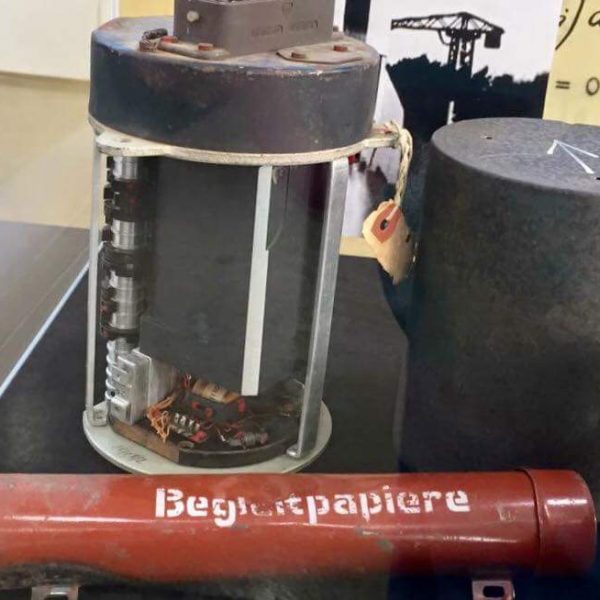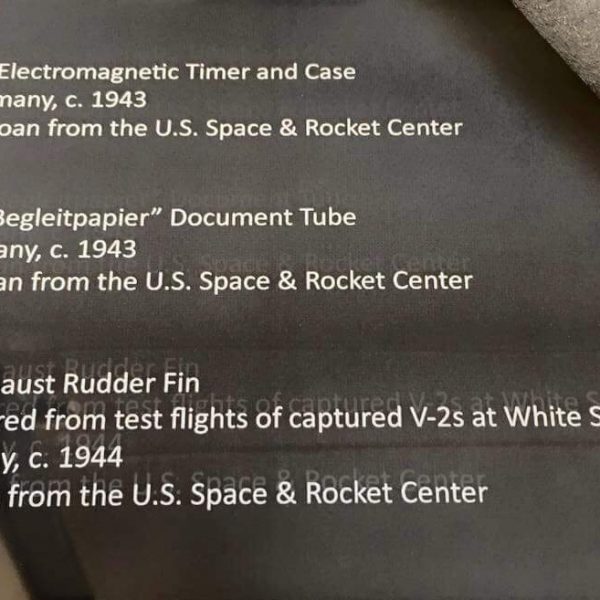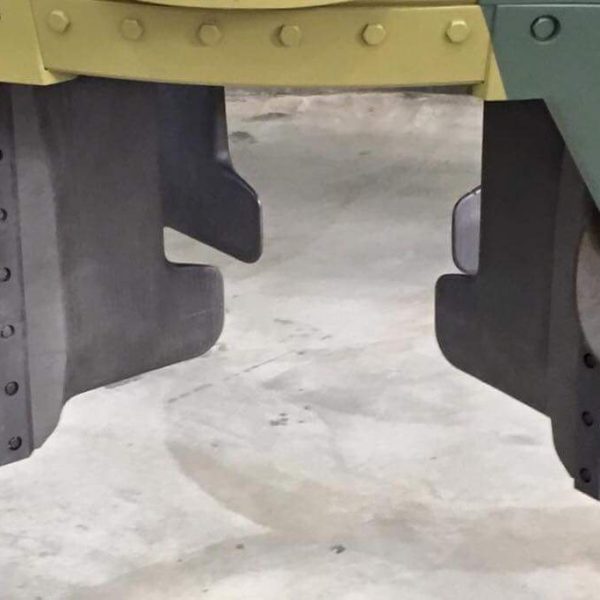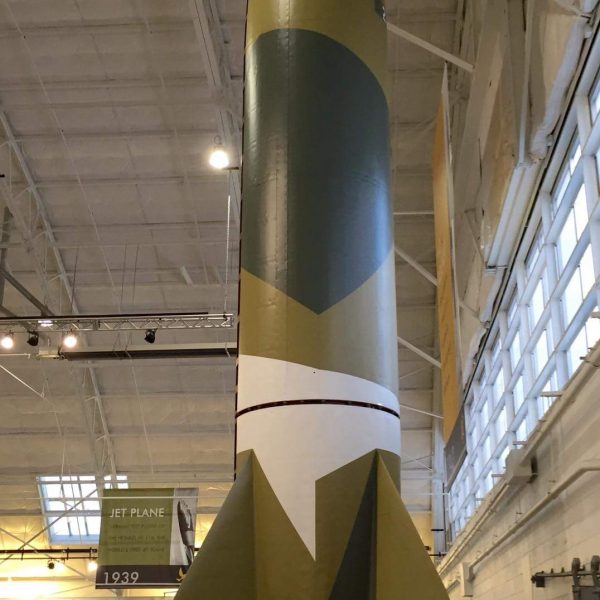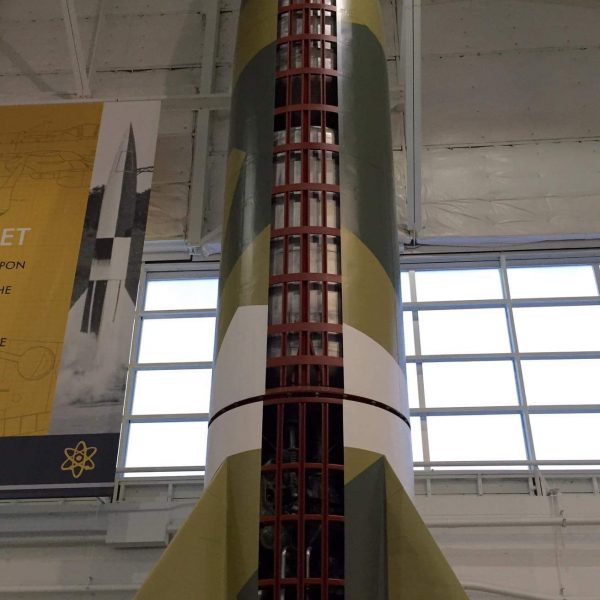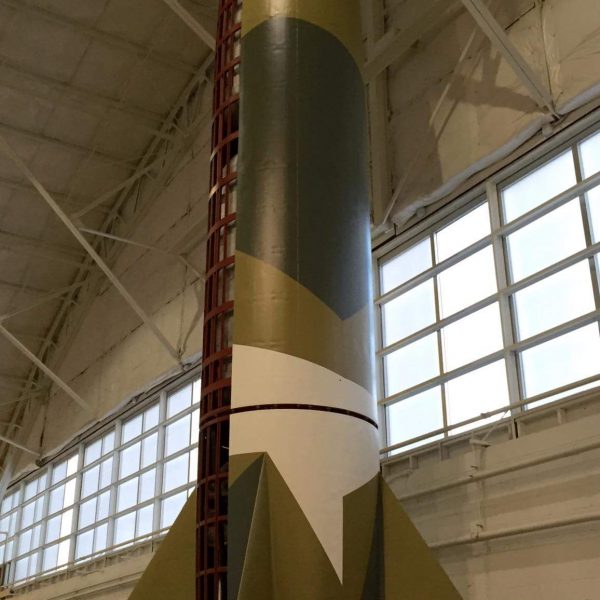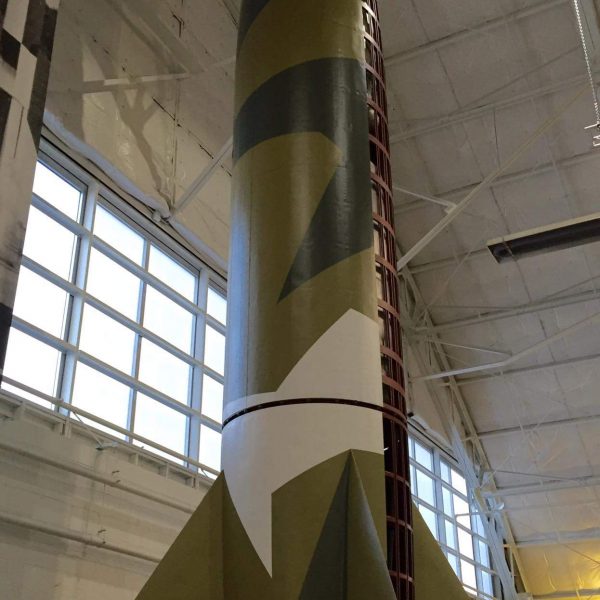Courtesy of Randy Malmstrom
Mittelwerk GmbH Aggregat 4 (A-4) Vergeltungswaffe 2. This particular V-2 was restored from interior components recovered during the 1990’s from the Mittelbau-GmbH facility which used slave laborers from the Mittelbau-Dora concentration camp. However, the sign also on display is believed to be from Test Stand 7 at Peenemünde, the launch pad used for the first successful launch of the V-2 on October 3, 1942. My photos at Flying Heritage & Combat Armor Museum on Paine Field in Everett, Washington.
Former World War I artillery officer Walter Dornberger was appointed to the German Army’s Ballistics Council, and in 1932, was placed in charge of the development of a liquid-fueled rocket; Wernher von Braun was recruited to assist. The Peenemünde Army Research Center on the Baltic coast was opened in 1937 (Von Braun’s mother suggested the site as an open location). Von Braun used the work of American physicist Robert Goddard as a basis for the development of the Aggregat series of rockets. Originally designated the A-4 (as it was the fourth in a line of German rocket developments), in October 1944, Nazi Propaganda Minister Joseph Goebbels gave it the name Vergeltungswaffe 2 (“Retaliatory Weapon 2”). Aggregat referring to a series of ballistic missile designs, the first operational liquid-fueled rocket to reach sub-orbital altitudes. While the first launches of the A-4 were in 1942, combat use began in September 1944. After the bombing of Peenemünde by the Allies, assembly was moved inland to a facility especially built by Mittelwerk GmbH in central Germany using slave laborers from the nearby Mittelbau-Dora concentration camp (also known as “Dora-Nordhausen”) near Nordhausen, an industrial town in Thuringia ( that camp was initially built as a sub-camp of the Buchenwald camp). Beginning in September 1944, a total of about 3,200 V-2’s targeted (primarily) cities in Britain and Belgium – launched from stationary then portable launching pads (London alone was targeted with about 1,360 and Antwerp with about 1,610 – killing an estimated 9,000 people in that city. The last V-2’s used in combat were launched from The Hague (the last remaining V-2 launch site) on March 27, 1945 against targets in Britain and Belgium. The V-2’s were assembled by an estimated 12,000 slave laborers in both Germany (from the Mittelbau-Dora concentration camp) and France (at Méry-sur-Oise, a huge, domed underground facility). And production plants for components were scattered in various locations in Germany and Austria: Rebstock concentration camp near Dernau an der Ahr (ground installations and vehicles); Gustav Schmale in Lüdenscheid (parts of the combustion chamber); and Hagener Accumulatorenfabrik AG (accumulators) As with other Nazi equipment, aircraft and vehicles built by slave-labor, there were efforts to sabotage the weapons during assembly, but apparently this did not seriously hinder production. Nonetheless, upon final inspection, half of the weapons proved not fully functional and had to be corrected – however, this was due more to the fact that the engineers were making structural changes on a regular (almost daily) basis. Because of its speed and altitude, there was no warning and no defense (unlike the slower, louder and lower-flying V-1). The fuselage of the rocket was made of frames and stringers which were covered with thin steel plates and stood 14 meters high and weighed 13.5 tons. The rockets reached a top speed of nearly Mach 5 (4,824 km/hr.) after a burn time of approximately 60 seconds and reached a peak elevation of 84.5 km.; the flights lasted approximately 5 minutes to targets at a range of 250-300 km. Guidance in flight was provided by servomotors which received their control information by a twin gyroscopic system that controlled steering tabs on the chain-driven fins, and steering vanes which were in the line of the engine’s exhaust through 4 heat-resistant graphite flow turbines (one gyro controlling the aileron axis and the other the side and elevator axis). A timer set prior to liftoff caused the inclination to be changed as it neared the target. The liquid fuel was a mixture of alcohol and oxygen. The warhead consisted of a 1,000 kg. explosive of an amatol mixture (with an ignition temperature above 200 degrees Celsius to avoid explosion in flight due to the rise in temperature due to friction).
Following World War II, the U.S. Joint Intelligence Objectives Agency established Operation Paperclip, the program to bring over 1,500 German scientists, engineers and technicians to the U.S. with immunity to any war crimes trials. von Braun was one of those brought to the U.S., and, as is well-known, later became the head of the NASA team that developed the PGM-11 Redstone rocket, a direct descendant of the V-2, which then lead up to the Saturn rockets and Apollo moon landings. (On a personal note, in 1946, my father was stationed at U.S. Base Y-80 in Wiesbaden, Germany, and was on at least one flight in a Beechcraft C-45 transport aircraft ferrying two of these scientists from Eschborn to Braunschweig in the UK zone of Germany.

